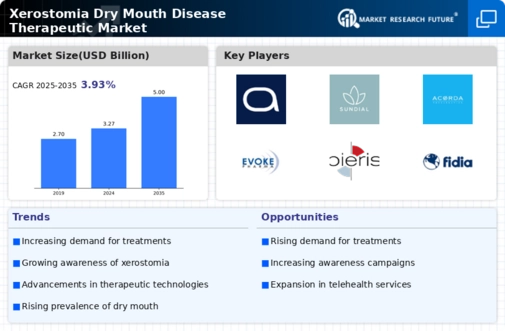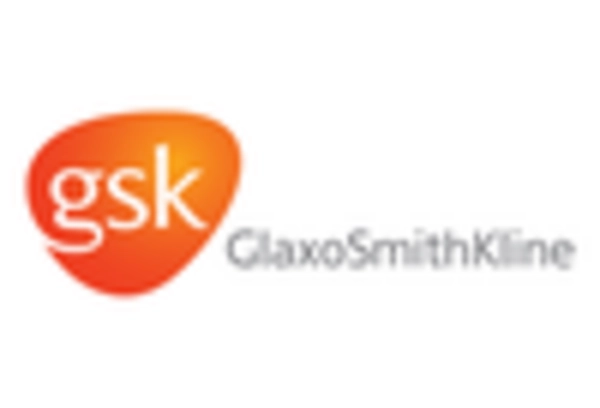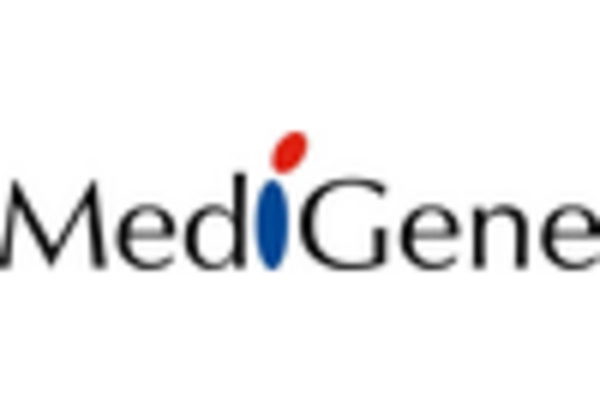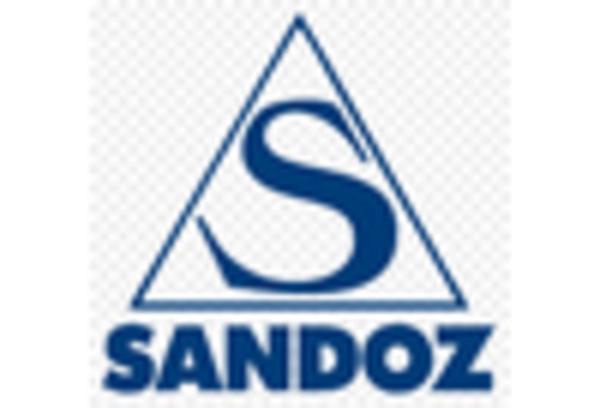Increased Research Funding
Increased research funding for xerostomia is a critical driver for the Xerostomia Dry Mouth Disease Therapeutic Market. Government and private organizations are recognizing the need for more effective treatments and are allocating resources to research initiatives aimed at understanding the underlying causes of xerostomia. This influx of funding is likely to facilitate the development of novel therapeutic agents and improve existing treatment options. Furthermore, collaborative efforts between academic institutions and pharmaceutical companies are expected to yield innovative solutions that address the complexities of xerostomia. As research progresses, it is anticipated that new therapies will emerge, thereby expanding the market and providing patients with more effective management strategies.
Rising Prevalence of Xerostomia
The increasing prevalence of xerostomia, or dry mouth, is a notable driver for the Xerostomia Dry Mouth Disease Therapeutic Market. Factors such as an aging population and the widespread use of medications that induce dry mouth symptoms contribute to this trend. It is estimated that approximately 10 to 30 percent of the population experiences xerostomia, particularly among older adults. This growing demographic is likely to drive demand for therapeutic solutions, as individuals seek relief from discomfort and associated complications. Furthermore, the recognition of xerostomia as a serious condition has led to enhanced awareness among healthcare providers, prompting more patients to seek diagnosis and treatment. As a result, the market for xerostomia therapeutics is expected to expand, reflecting the urgent need for effective management options.
Growing Awareness of Oral Health
The growing awareness of oral health and its impact on overall well-being is driving the Xerostomia Dry Mouth Disease Therapeutic Market. Public health campaigns and educational initiatives are increasingly highlighting the importance of maintaining oral hygiene and addressing conditions like xerostomia. As individuals become more informed about the consequences of untreated dry mouth, including dental caries and oral infections, there is a rising demand for effective therapeutic options. This heightened awareness is likely to encourage patients to seek treatment, thereby expanding the market for xerostomia therapeutics. Additionally, dental professionals are becoming more proactive in diagnosing and managing xerostomia, further contributing to the growth of the market.
Innovations in Treatment Modalities
Innovations in treatment modalities are significantly influencing the Xerostomia Dry Mouth Disease Therapeutic Market. Recent advancements in drug formulations, including the development of saliva substitutes and stimulants, have enhanced the therapeutic landscape for xerostomia. For instance, the introduction of new prescription medications that stimulate salivary flow has shown promising results in clinical trials, potentially improving patient outcomes. Additionally, the integration of technology in treatment, such as mobile applications for symptom tracking and telehealth consultations, is likely to enhance patient engagement and adherence to treatment regimens. The market is projected to witness a compound annual growth rate (CAGR) of around 5% over the next few years, driven by these innovations that cater to the diverse needs of patients suffering from xerostomia.
Aging Population and Chronic Conditions
The aging population and the prevalence of chronic conditions are significant factors influencing the Xerostomia Dry Mouth Disease Therapeutic Market. As individuals age, they are more likely to experience xerostomia due to natural physiological changes and the increased use of medications for chronic diseases. Conditions such as diabetes, hypertension, and depression are commonly associated with dry mouth symptoms, leading to a higher demand for therapeutic interventions. It is projected that the number of individuals aged 65 and older will continue to rise, further amplifying the need for effective xerostomia management solutions. This demographic shift is expected to drive market growth as healthcare providers seek to address the unique challenges faced by older patients suffering from dry mouth.


















Leave a Comment